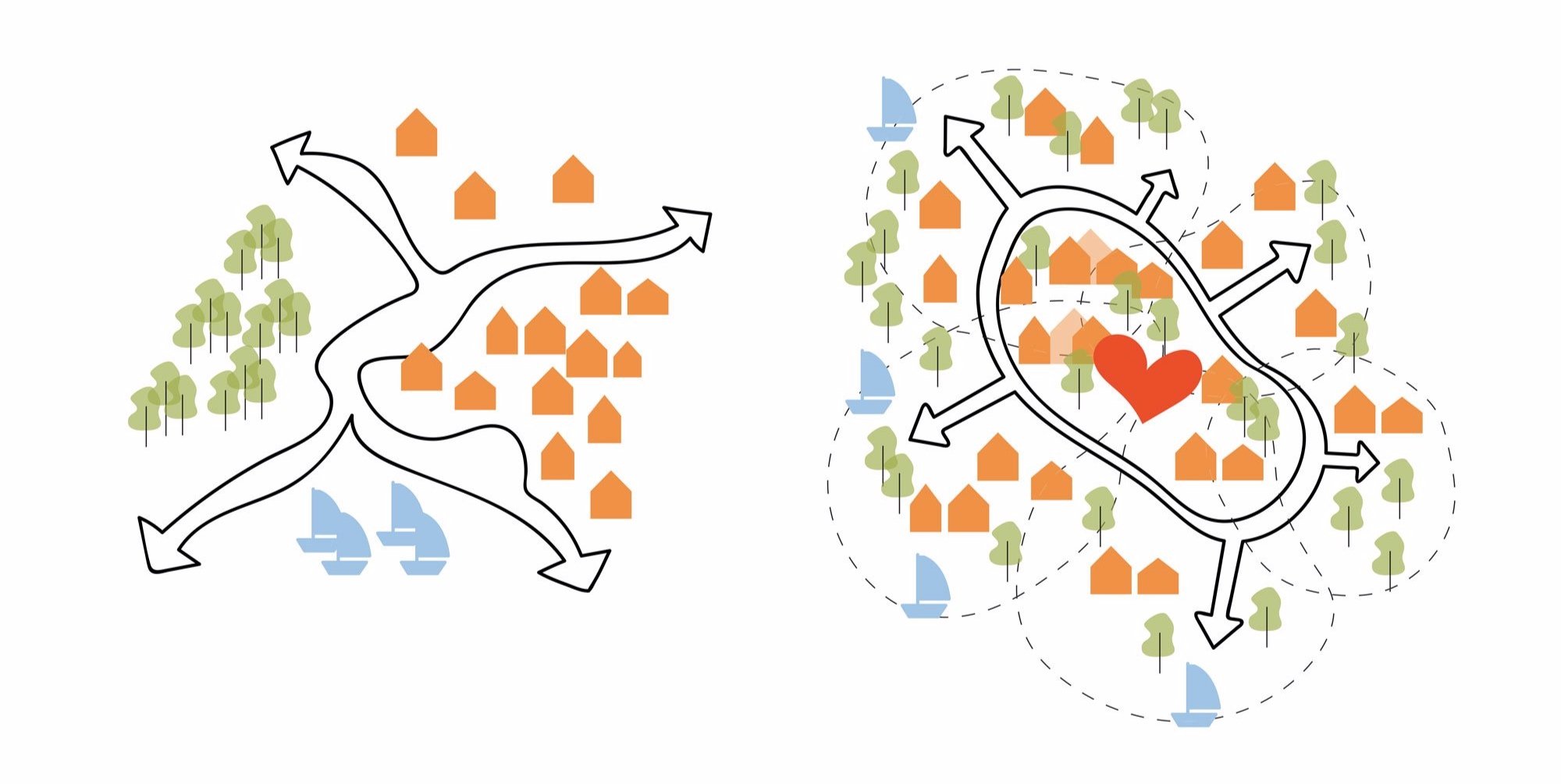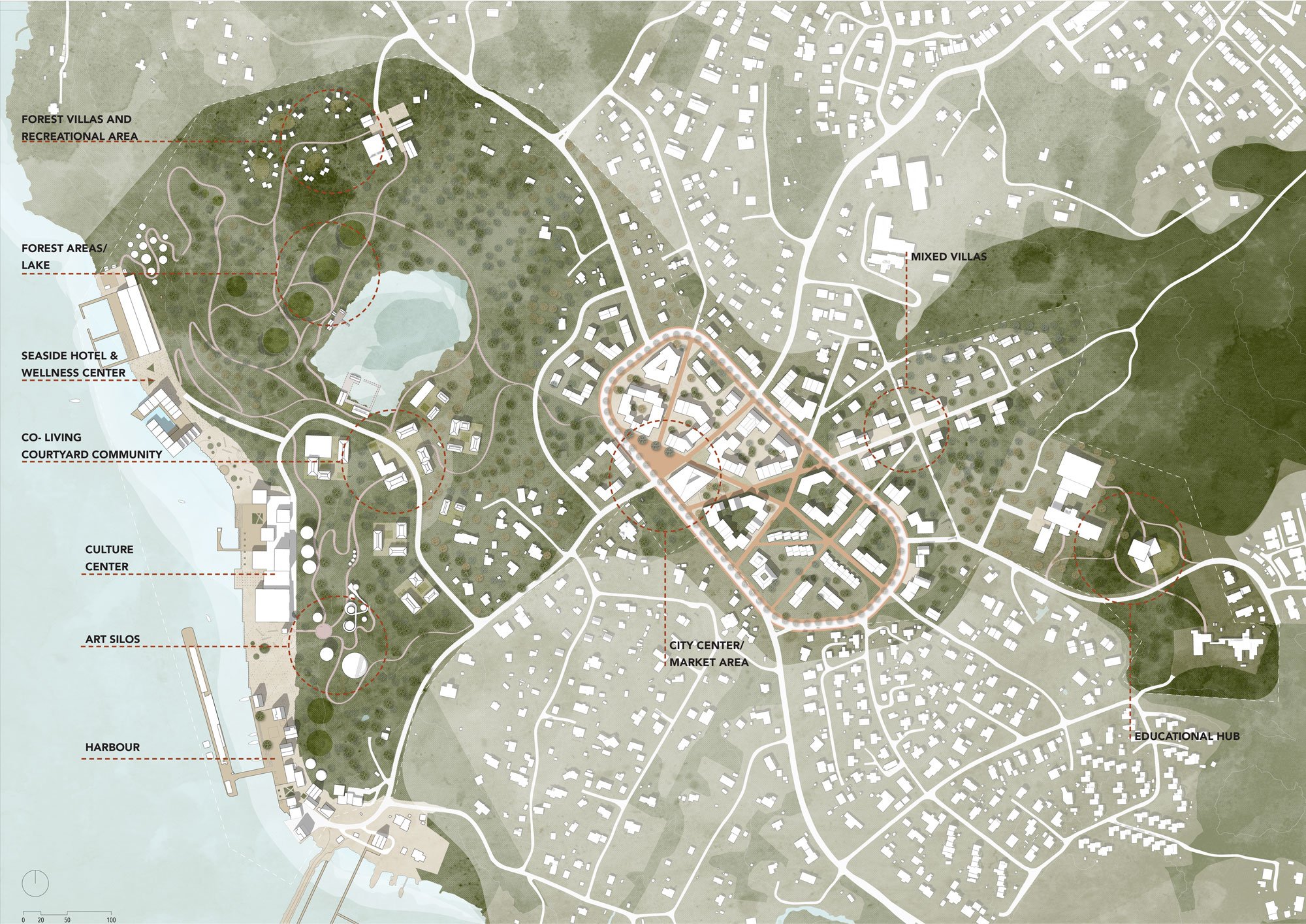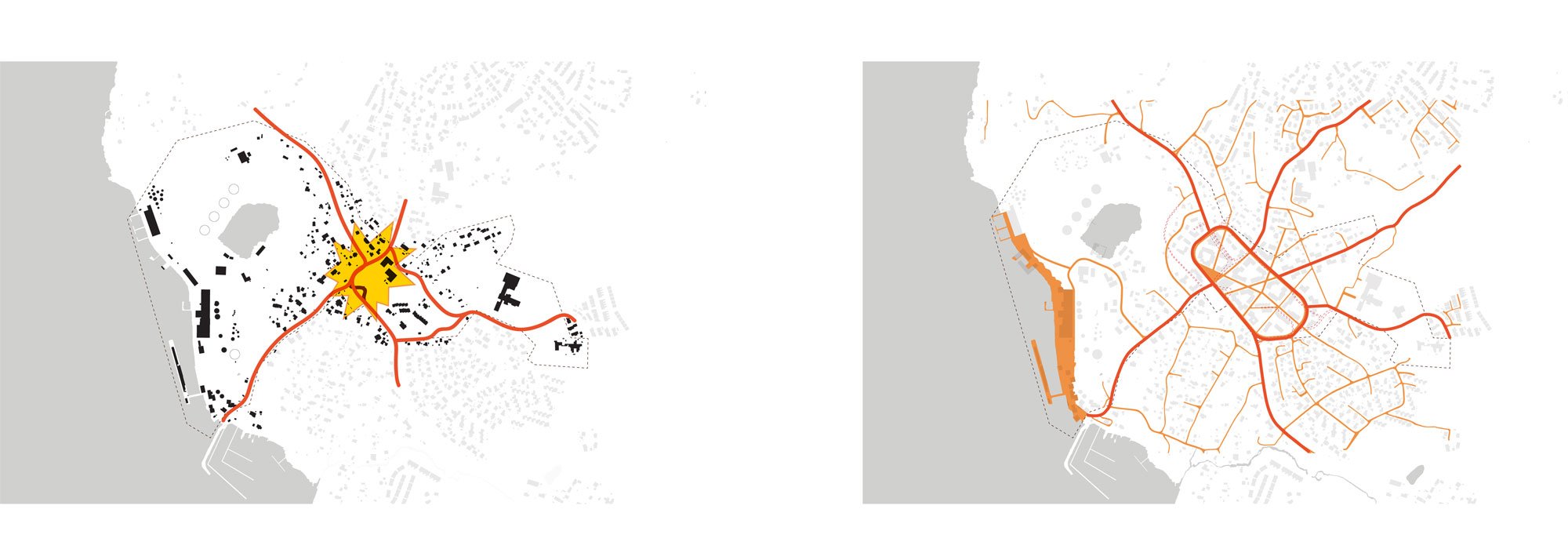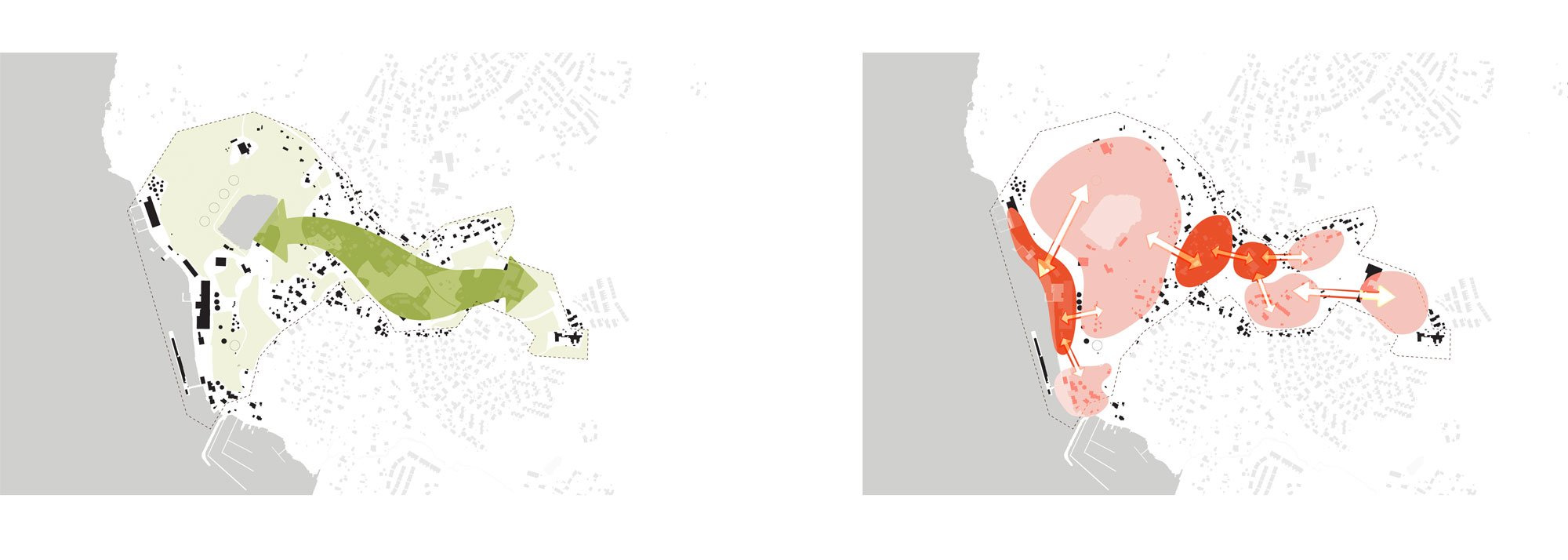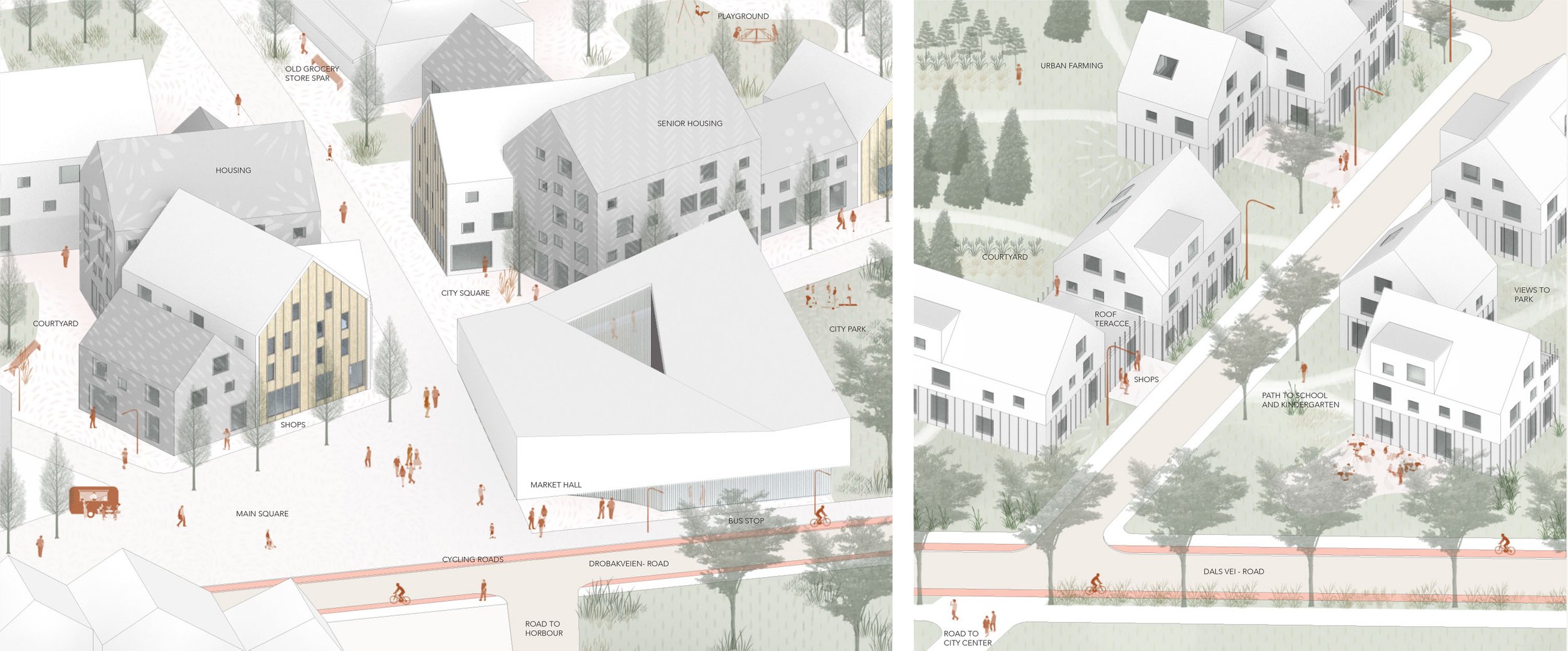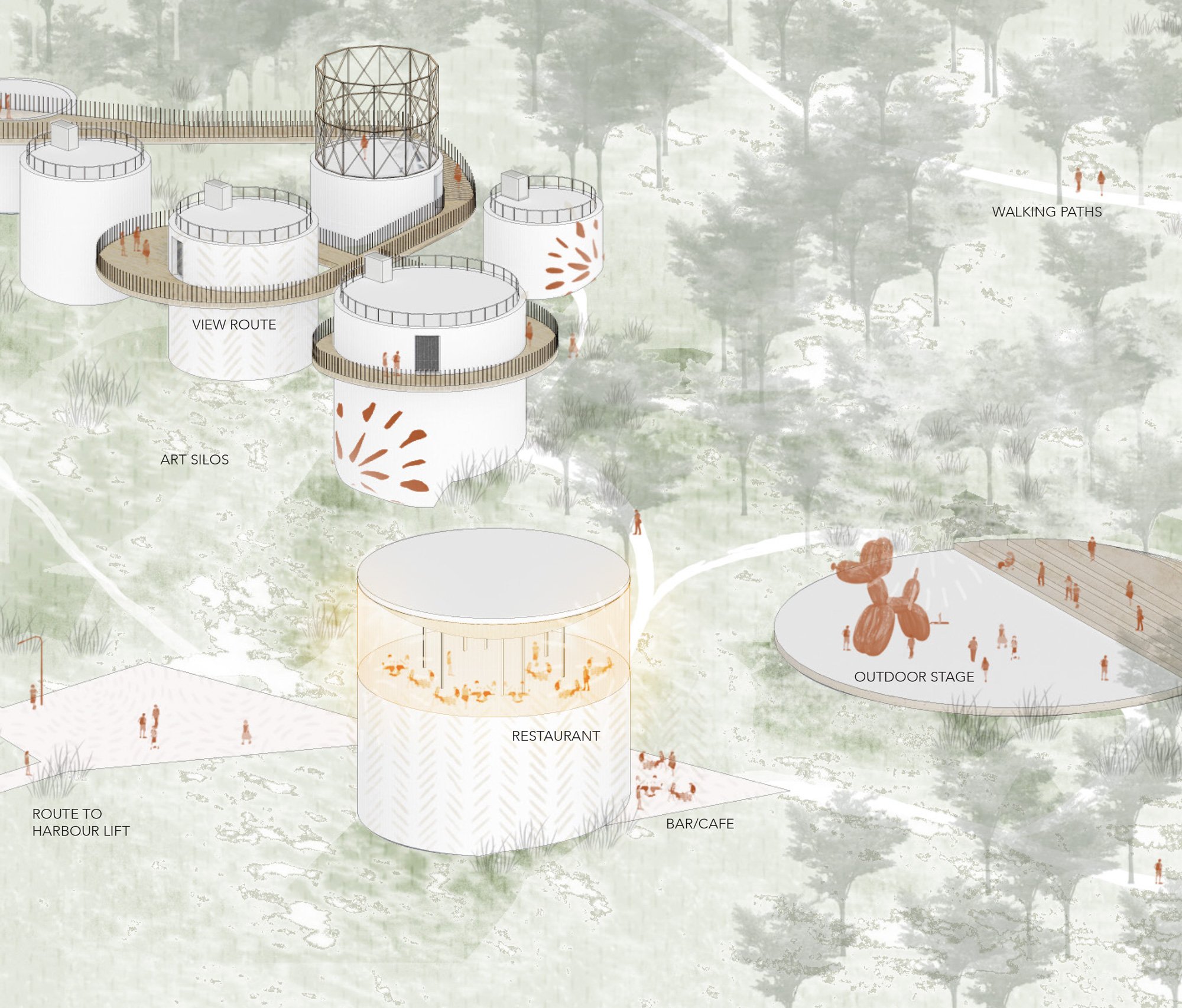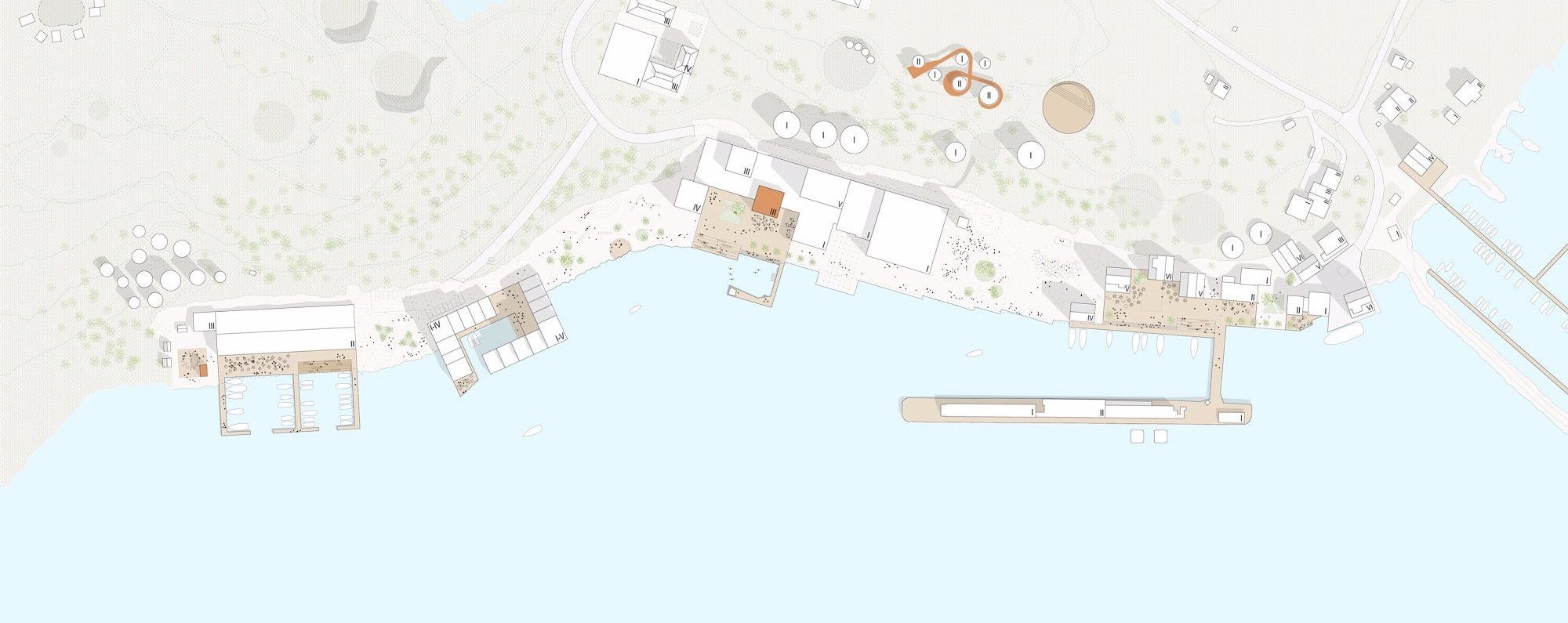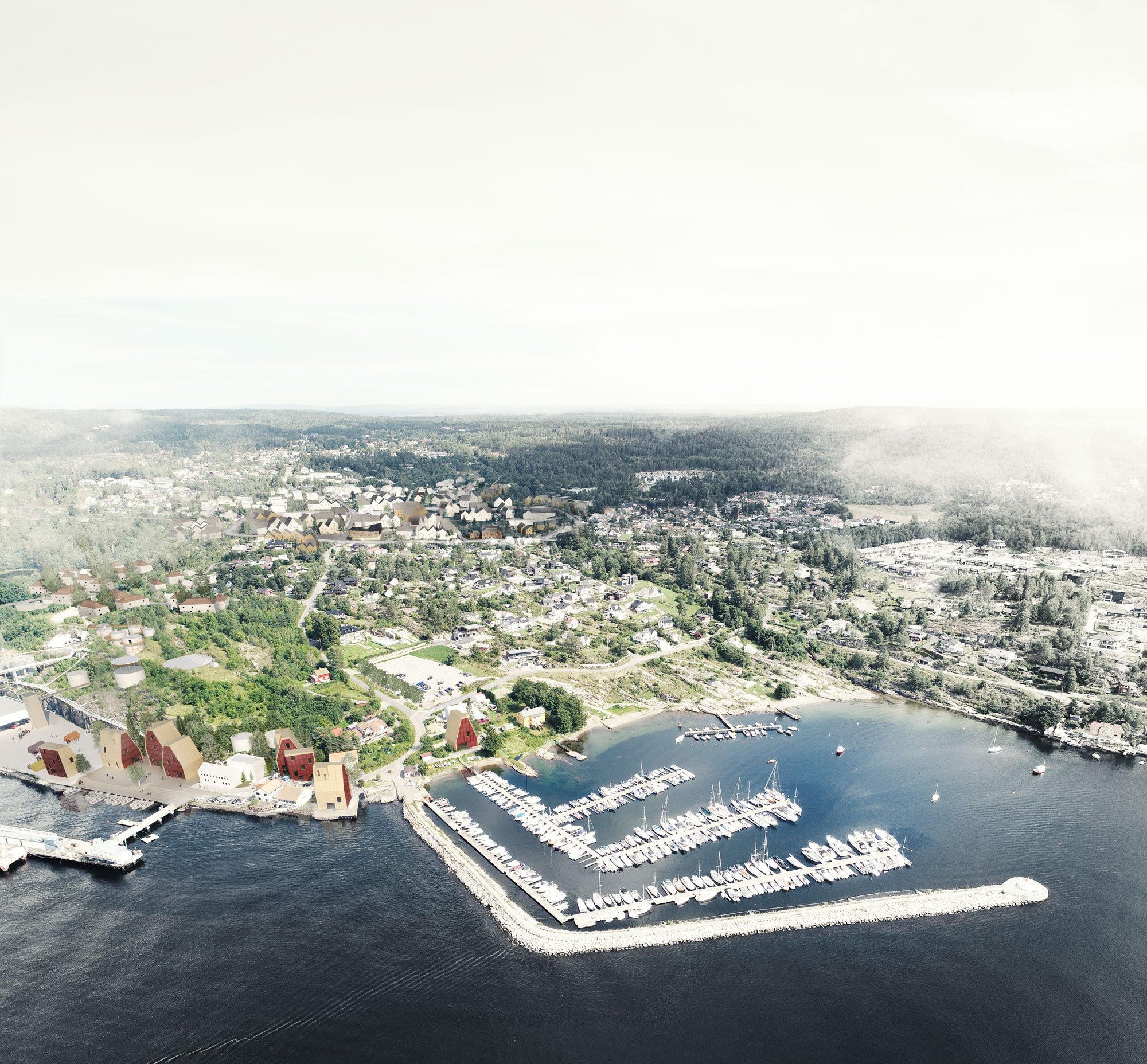TILKOBLET
EUROPAN 16 COMPETITION ENTRY
Fagerstrand, Norway | 2021
Fagerstrand is a local Centre on the western side of the Nesodden peninsula. Located by the shores of the Oslo fjord it is known for its industrial history and unspoiled nature, yet there are many challenges that must be addressed for Fagerstrand to become a sustainable town - a Living Citie of the future. The proposed solution for the Fagerstrand development tackles all three main issues – densification on nature’s terms, fragmented city structure and dangerous road junction, by taking bold, yet needed steps to ensure a co-evolution and to generate new kind of synergies. The Fagerstrand of the future is a healthy and agile city, that has a strong identity built upon their history.
A new city center – the heart of the Fagerstrand, is naturally the most dense part of the area. It provides a clear urban framework for all kind of mixed-use developments, new municipal functions and social interactions as well as establishes the functional center for the retail and services that works as a core and link for all the surrounding areas and their functions. Towards North West from the city center the new mixed villas area is created by slight densifying of natural habitat. Strongly nature oriented yet well connected to the local center, this area is perfect for the all kind of households or small businesses with the nature, urban farming and modern living in hearts. This area is perfect example of Fagerstrand future identity of modern co- evolution where densification happens on the nature’s terms.
In future Fagerstrand will provide a more diverse selection of dwelling options. New co-living/courtyard community – a small scale city block will area is completely integrated in nature and located in close proximity to harbour. The whole coastline has been completely redesigned to form a unique and vigorous ensemble of culture and business-related clusters, that will support functions placed around Fagerstrand and provide services one can’t find elsewhere in city. Most of existing structures are preserved and re-used to serve the new functions, yet preserve the local identity and history. New structures, such as seaside hotel and mixed-use office/dwelling buildings are added as well. The spaces between structures are redesigned into pleasant urban city squares, public courtyards and multifunctional spaces for events, gatherings and social interactions.


